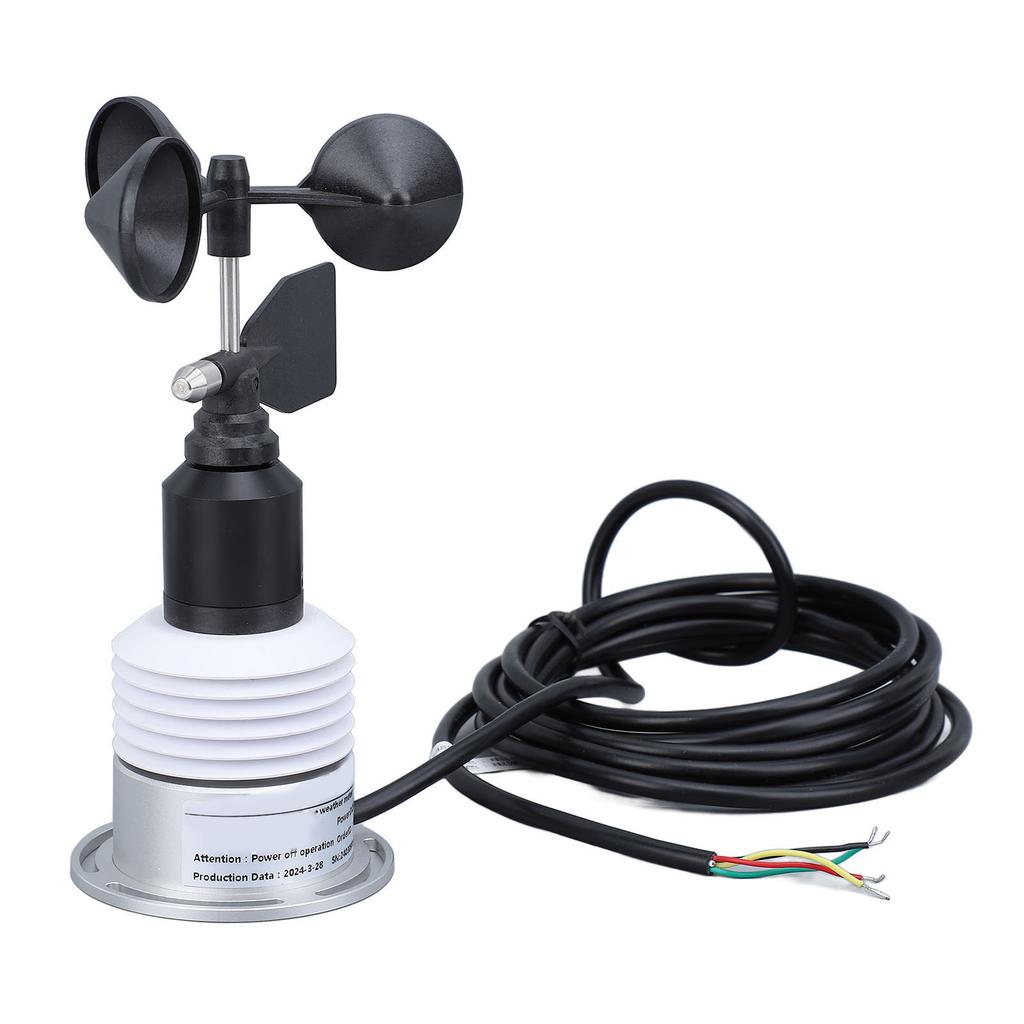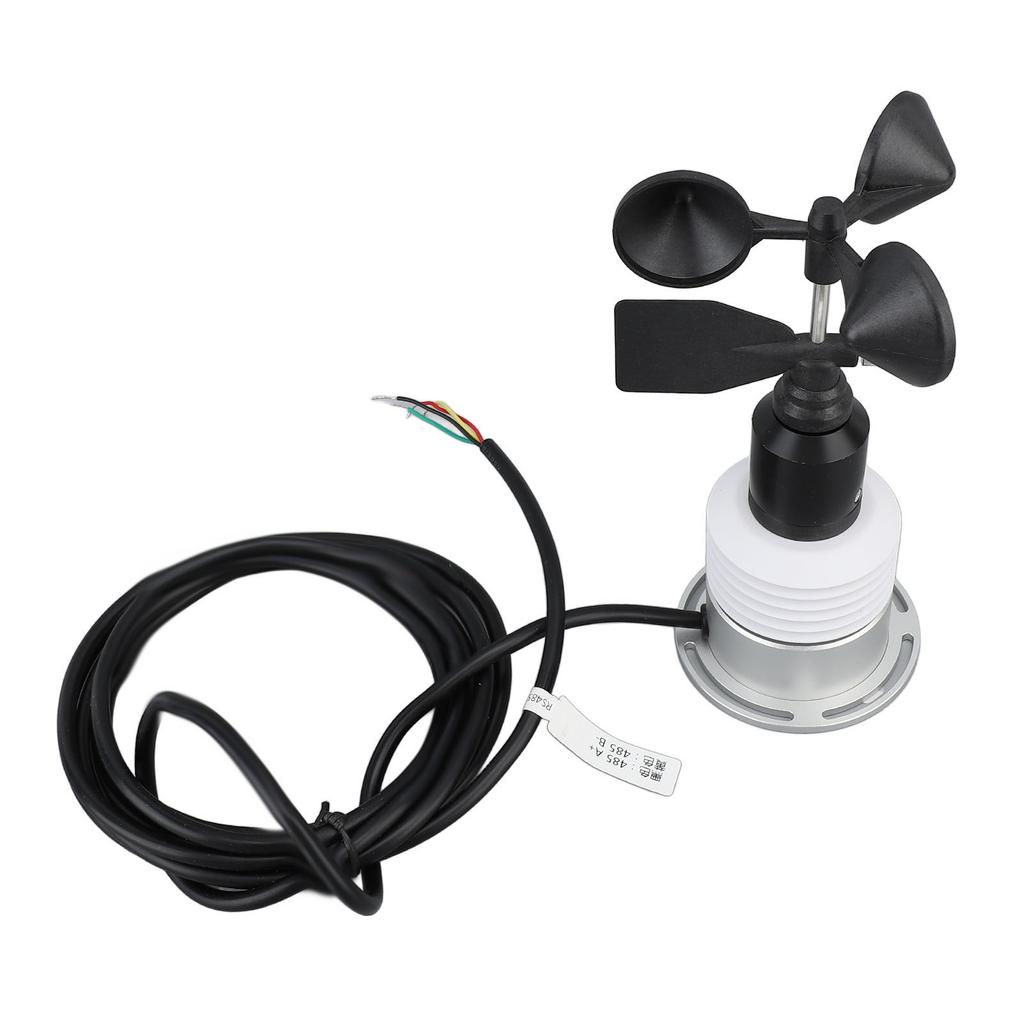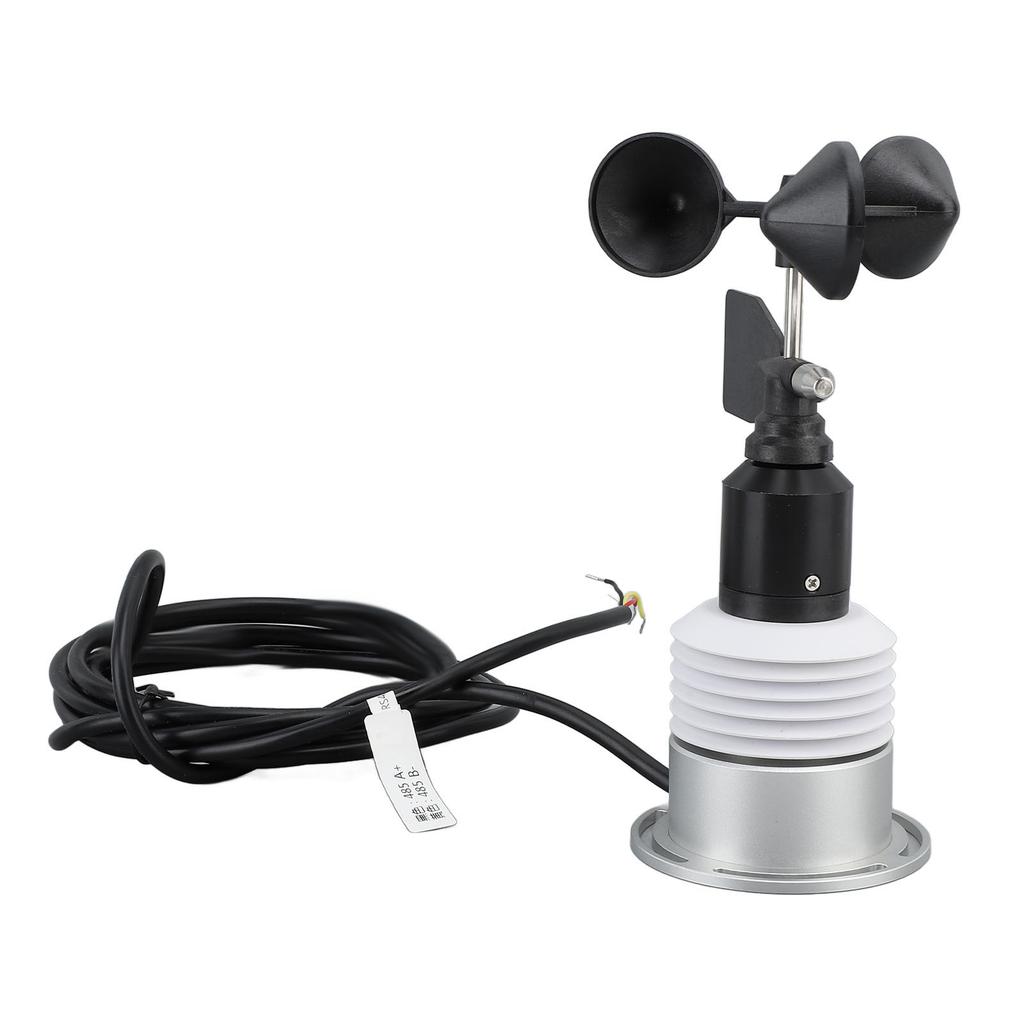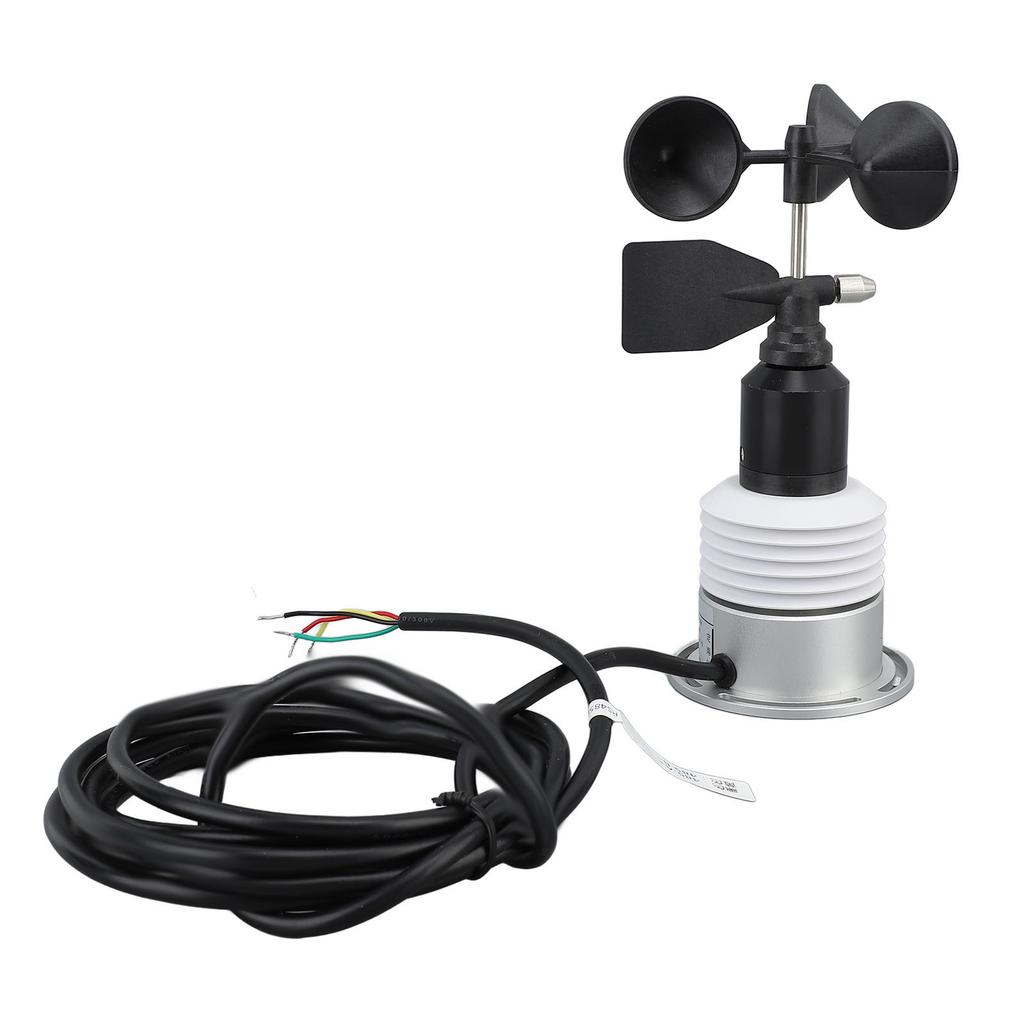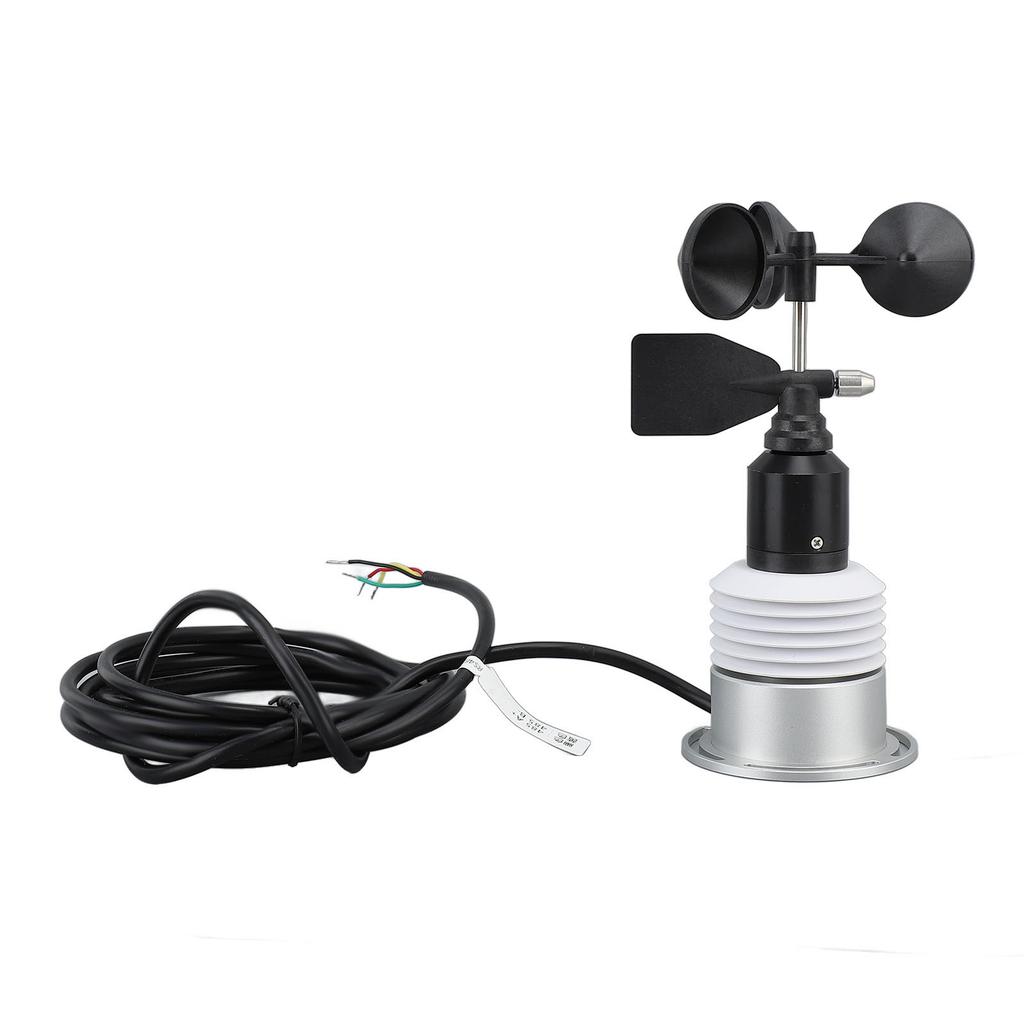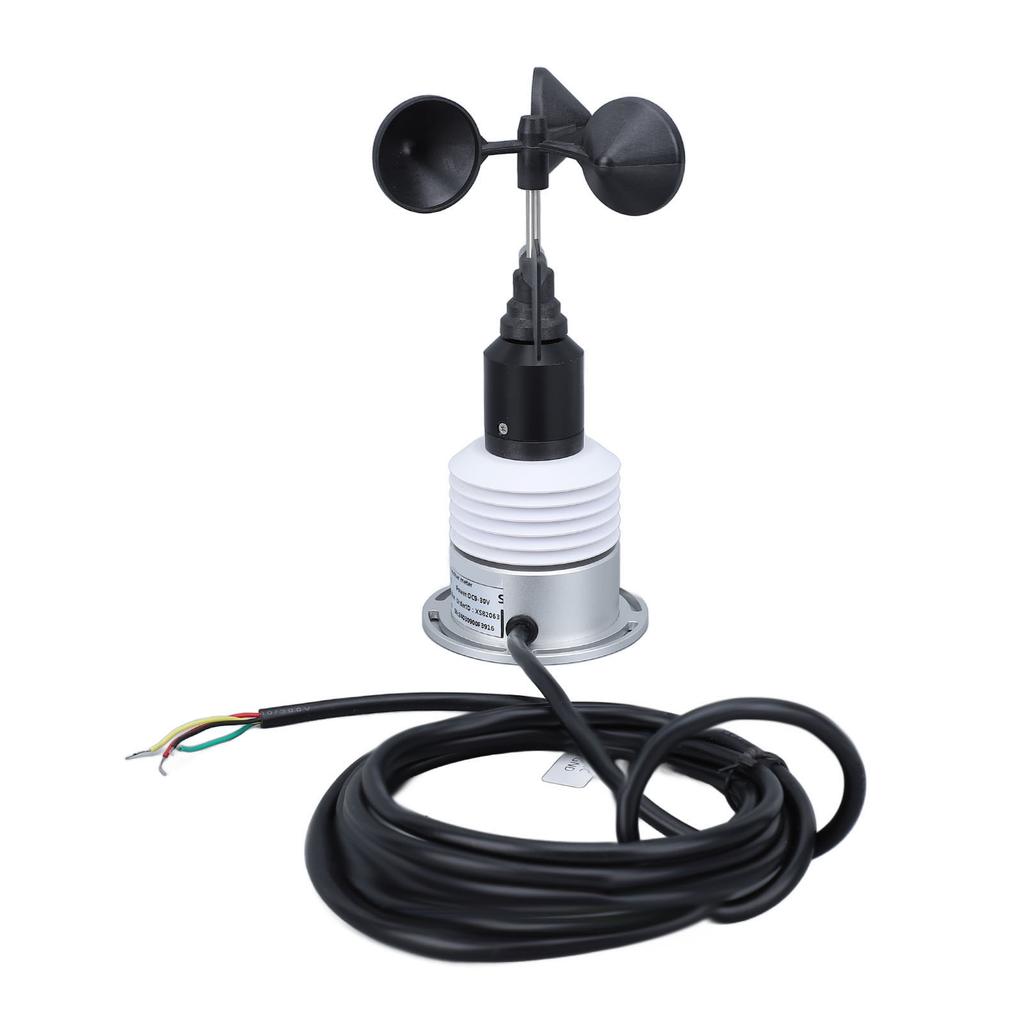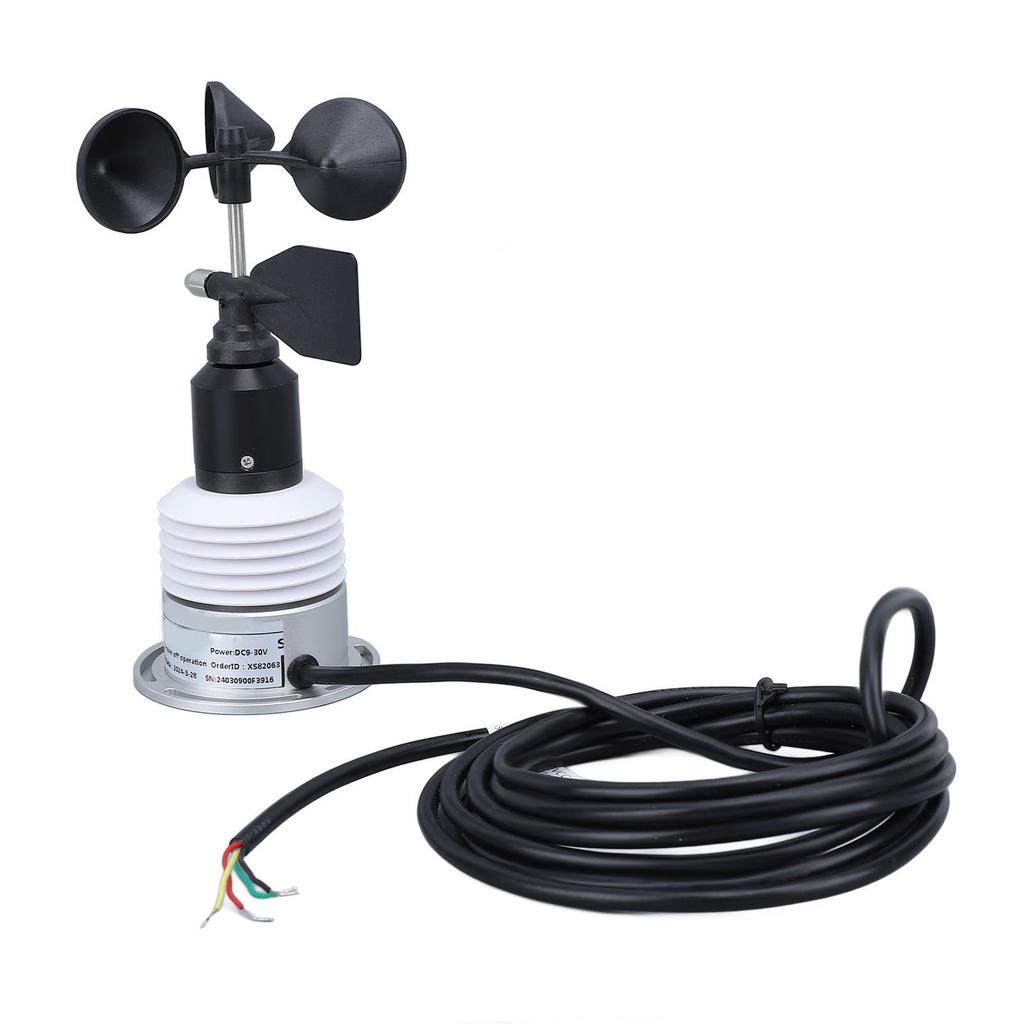Feature:
1. Multifunctional Monitoring: Featuring a 5 in 1 integrated design, this weather meter can simultaneously track wind speed, wind direction, temperature, humidity, air pressure, and more, with the option to select a combination of 2, 4, or all 5 monitoring modes based on actual needs.
2. Wide Environmental Adaptability: Thoroughly tested for high and low temperatures, waterproofing, salt spray resistance, and more, this weather sensor boasts excellent reliability, ensuring long lasting use in various environmental conditions.
3. High Performance Filtering Algorithm: Utilizing efficient filtering algorithm and special compensation technology for rainy and foggy weather, this 5 in 1 weather meter guarantees data stability and consistency.
4. Compact and Portable Design: Compared to traditional integrated environmental sensors, this weather monitoring sensor is designed to be compact, lightweight, and easy to carry, making it convenient for installation and outdoor use without compromising on functionality.
5. Versatile Applications: Ideal for meteorological environmental monitoring in fields such as agriculture, forestry, meteorology, electricity, chemical plants, ports, railways, highways, and more, providing crucial wind information to facilitate appropriate response measures.
Specification:
Item Type: 5 in 1 Weather Sensor
Material: ABS, aluminum alloy
Weight: Approx. 457.00g/16.12oz
Product Size: Approx. 165x70mm/6.5x2.76in
Power Supply Voltage: DC 9 to 30V
Communicating Type: RS485 (RTU)
Cable Length: Approx. 2m/78.7in
Working Environment: 0 to 100percent RH, -40 degrees C to +60 degrees C
Protecting Level: IP64
Built in Sensors: Wind speed, wind direction, temperature, humidity, air pressure
Application: Wind direction measurement in greenhouse, environmental conservation, ships, wharf, breeding, advertising gates, meteorology, ocean, environment, airports, ports, laboratories, industry and agriculture, and transportation environments
Wind Speed: 0 to 45m/s range, start wind speed less than 0.8m/s, +/-(0.5+0.02V)m/s accuracy, 0.1m/s resolution, 40mW power consumption
Wind Direction: 0 to 359 degrees range, +/-3 degrees accuracy, 1 degrees resolution, 40mW power consumption
Atmospheric Temperature: -40 to 80 degrees C range, +/-0.3 degrees C accuracy, 0.1 degrees C resolution, 1mW power consumption
Atmospheric Humidity: 0 to 100percent RH range, +/-5percent RH accuracy, 0.1percent RH resolution, 1mW power consumption
Atmospheric Pressure: 300 to 1100hPa range, +/-0.5 hPa (25 degrees C) accuracy, 0.1 hPa resolution, 0.1mW power consumption
Sensor Total Power Consumption: <150mW
Wiring Diagram :
485 signal output, the sensor wire sequence is defined as follows:
Red: power positive VCC
Green: power negative GND
Black: 485A+
Yellow: 485B-
Note: Make sure the wiring is correct before sending power.
Communicating Protocol:
All commands in the manual of weather meter are RTU protocol format commands. All have been configured at the factory, if you need to modify the protocol, refer to the relevant commands or ask for help. Baud rate 9600, 8 data bits, 1 stop bit, no check. 2 frames of data communicating interval of at least 500ms. The default address is 1, and the RTU communicating format is as follows:
Number of address bytes: 1 byte
Number of command bytes: 1 byte
Number of register address bytes: 2 bytes
Number of data bytes: N bytes
Number of CRC check bytes: 2 bytes
I.Register address:
The weather meter can integrate five modes, namely wind speed, wind direction, air temperature, air humidity, and atmospheric pressure. Each sensor has its own register address.
II.Configuration address and baud rate:
The commands to write the device address are the same for the weather meter.
III.CRC verification steps:
1. Preset the 16 bit register to hex FFFF, call this register the CRC register
2. Isolate the first 8-bit data with the lower bit of the CRC register, and put the result in the CRC register
3. Check the lowest bit by shifting the contents of the register one bit to the right (toward the lower bit) and filling the highest bit with a 0
4. If the lowest bit is 0: repeat step 3 (shift again) if the lowest bit is 1: the CRC register is iso orthogonal to the polynomial A001 (1010 0000 0000 0001)
5. Repeat steps 3 and 4 until it is shifted right 8 times so that the entire 8 bit data is all processed
6. Repeating steps 2 through 5 for the other 8 bit data
7. The final CRC register obtained is the CRC code (the CRC code obtained is low before high).
Troubleshooting:
The meter displays an incorrect value when RS485 is output. The meter may not be able to acquire data correctly due to wiring problems or communicating serial port failure. Please check whether the wiring is correct and firm, whether the serial port is occupied, and whether the serial port setting is correct..
Package List:
1 x 5 in 1 Weather Sensor with Cable
Note:
1. Please check if the packaging is intact and verify if the product model matches the selection
2. Do not wire with power, only power on after checking the wiring is correct
3. The sensor is a precise device, users should not disassemble, contact the sensor surface with cutting objects or corrosive liquids when using, to avoid damaging the product
4. Ensure that the installation environment does not interfere with the sensor by other running devices, which may not fully comply with universal standards, such as radioor radar transmitters, ship engines, engines, etc.
5. Do not install on the same plane as any radar scanning device, at least 2 meters away
6. Avoid eddies generated by surrounding buildings such as trees, power poles, high rise buildings, which will affect the accuracy of the product
7. Do not plug or unplug with power on
8. When installing, the sensor should be oriented south, and the sensor outlet hole should be aligned with the geographical south. The weather meter is a precise instrument, handle with care, do not knock.











